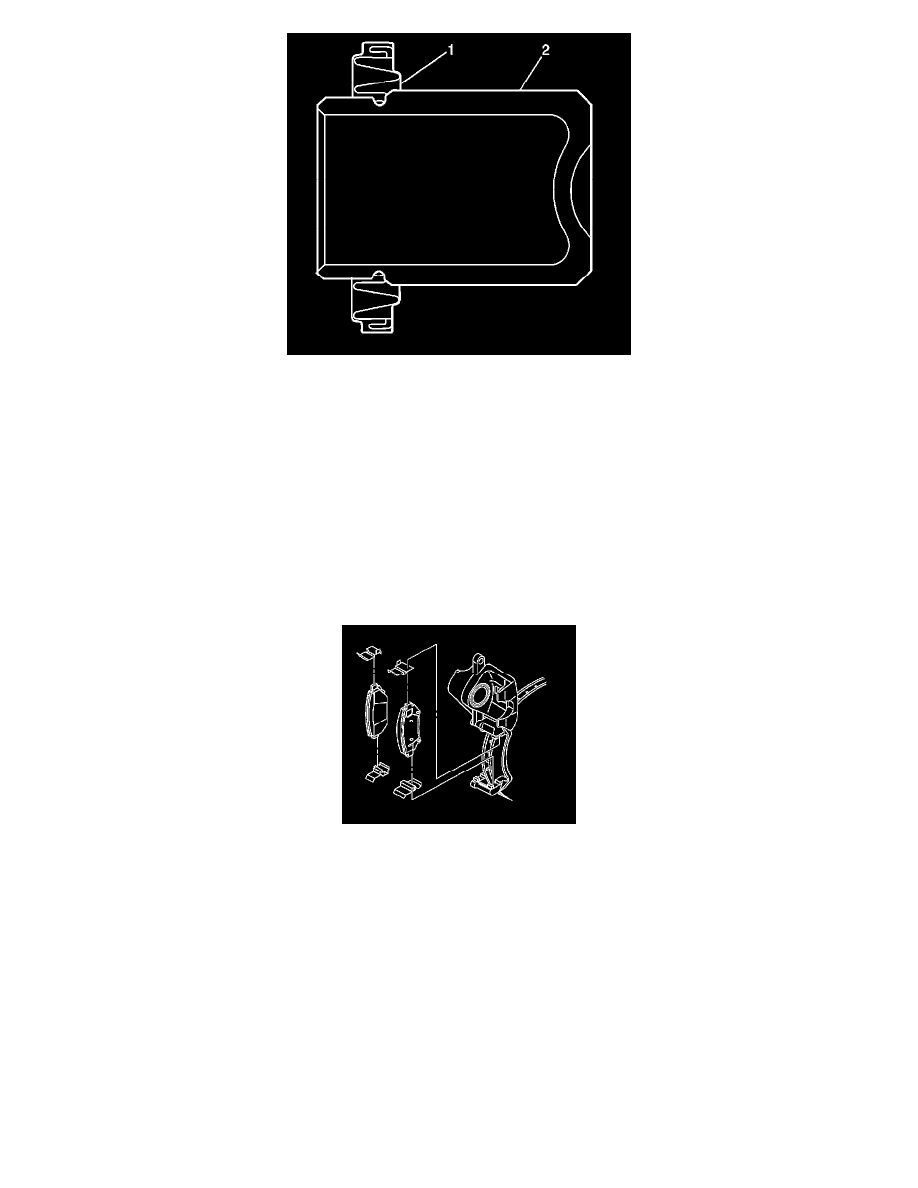Rendezvous AWD V6-3.4L VIN E (2005)

17. Inspect the brake caliper piston dust boot (1) for the following conditions:
^
Cuts
^
Tears
^
Leaking
^
Deterioration Replace the brake caliper piston dust boot if damage exists.
18. Inspect the brake caliper bolts for corrosion or damage. If corrosion is found, use new parts, including bushings, when installing the brake caliper.
Do not attempt to polish away corrosion.
Installation Procedure
1. Important: Use denatured alcohol to clean the outside surface of caliper boot before installing new brake pads.
If you are installing new brake pads, use a C-clamp in order to compress the piston to the bottom of the caliper bore. Use the old brake pad, a
metal plate or a wooden block across the face of the piston in order to protect the piston and the caliper boot.
2. Install the four brake pad retainers to the caliper bracket.
3. Important: Ensure that the wear sensor is positioned at the leading edge (upward) of the inner pad during forward wheel rotation.
Install the brake pads over the brake pad retainers and onto the caliper bracket.
4. Thoroughly clean and apply Thread-locker GM P/N 12345493 (Canadian P/N 10953488) or equivalent to the threads of the brake caliper pin
bolts.
5. Notice: Use care to avoid damaging pin boot when rotating caliper.
Pivot the caliper down onto the pads.
